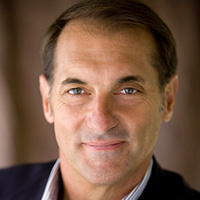The horror story in the Gulf of Mexico is California's wake-up call. Tens of thousands of tankers and container ships ply our coast each year. When even one of those ships goes off course, the consequences can be enormous. Think "Cosco Busan." That minor spill -- equivalent to a mere hour's worth of oil in the Gulf disaster -- fouled 200 miles of shoreline and killed marine life by the thousands.
Our Northern California coast is a remarkably productive ocean ecosystem. Kelp forests, sea otters, salmon, pelicans -- all are nourished by the cold, nutrient-rich waters that upwell from deep offshore, giving us our trademark fog. But a major oil spill could change all that for a generation. We must ensure that never happens.
One of the most effective ways to conserve our fragile coast is to support the creation of marine protected areas along its thousand-mile length. The California Marine Life Protection Act is a good start. This far-reaching, bipartisan legislation creates a network of coastal protected areas, some of them no-take reserves in which no fishing or extraction of natural resources is allowed. These 'safe zones' allow stressed populations of fish, shellfish and plants to recover from overfishing, pollution and oil spills.
But there's controversy. In Southern California and on the North Coast, some fishers, divers and native peoples are resisting the plan, contending that such reserves will destroy livelihoods by limiting their access and fishing rights. This shortsighted position is based on hearsay. The data tell us otherwise.
Several scientific studies have found large increases in biomass, density and diversity within such reserves -- in some cases, over 600 percent. Nearby fisheries actually improved. Plus, the no-take areas envisioned here amount to less than one percent of all state waters. Is one percent too much to ask?
